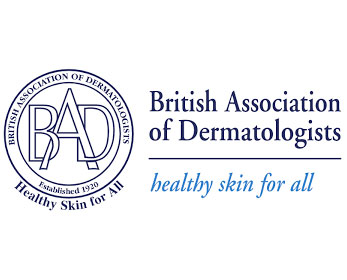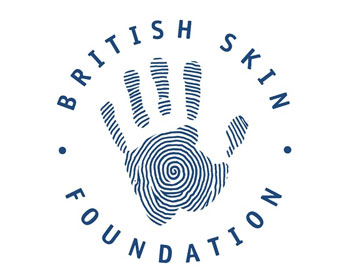What is melasma?
Melasma, also known as “chloasma” , is a common skin condition affecting adults. It causes pale to dark brown or greyish pigmentation (colouring) on the affected areas. Affected areas are flat not raised. It may be more noticeable during the summer and improve over the winter months. It is not cancerous.
Onset typically occurs between the ages of 20 and 40. Melasma is sometimes called “pregnancy mask” because it is more common in women who are pregnant. Research suggests that up to half of women may experience melasma during pregnancy. It is more common in people of colour and those who tan quickly.
If you have melasma, you may feel self-conscious about your appearance – support is available to help you with the challenges you may face. On this page, we explore what melasma is and look at what support is available to help you overcome the challenges of living with the condition.
Signs and symptoms
Melasma causes skin to darken, usually in symmetrical patches. It typically affects the following body parts:
- Cheeks
- Forehead
- Upper lip
- Nose
- Chin
It may also affect the neck and, occasionally, the forearms.
Melasma does not cause bumps or raised skin, or pain, itchiness or soreness.
Causes of the condition
Although the root cause of melasma is unknown, symptoms are thought to be caused by melanocytes (pigment-producing cells in the skin) making too much of the skin pigment melanin.
Symptoms may be triggered by:
- Pregnancy
- Hormonal drugs, including the contraceptive pill
- Cosmetics, particularly those containing perfumes
- Stress
- Ultra-violet (UV) light from sunshine and sunbeds
Is melasma genetic?
Melasma often seems to run in families, with 40% reporting that family-members are affected.
Types of melasma
There are three types of melasma or chloasma:
Epidermal
Epidermal melasma is characterised by a well-defined border and dark brown patches arranged in a scattered pattern. Epidermal melasma is accentuated when viewed under a Wood’s lamp (a torch which uses ultraviolet light to reveal skin conditions) and it responds well to treatment.
Dermal
Dermal melasma has an ill-defined border and patches appear pale brown to blue-grey. Their appearance is not enhanced by a Wood’s lamp and the condition does not respond well to treatment.
Mixed
In mixed melasma, patches may be dark brown to blue-grey. Symptoms may or may not be more visible under a Wood’s lamp. Treatment is sometimes successful.
How is melasma diagnosed?
Melasma should be easily diagnosed by your GP due to its distinctive pigmentation and distribution of the patches. In some cases, a biopsy may be taken.
Treatments for melasma
There is currently no cure for melasma, but there are various ways to treat and manage symptoms.
Melasma which occurs during pregnancy may clear up without treatment after childbirth.
Sun protection
It is important to protect any skin affected by melasma from exposure to sunlight. You should use a sun cream with SPF 30 or higher and a four- or five-star UVA rating. You should also avoid using a sun bed.
Avoiding the sun can lead to a vitamin D deficiency. Taking a supplement can help keep your vitamin D levels up. You can get vitamin D tablets from most pharmacies and large supermarkets.
Skin creams
Certain chemicals can stop or limit melanocytes from making pigments. These are available as creams which can be prescribed by a medical professional.
Other treatments
A number of other treatments are used in some cases but they are not always available on the NHS. These include:
- Chemical peels: This involves removing the layers affected by excess pigmentation.
- Micro-needling: Skin is repeatedly punctured to help creams go deeper into the skin. This carries certain risks, such as pain, swelling, infection and scarring.
- Laser treatment: The outer layers of the skin are removed or pigment-producing cells destroyed.
Melasma and my appearance
You may find that the effects of melasma on your appearance impact your self-esteem and confidence levels. You may be more aware of others staring at you, and it can be particularly challenging if people make comments or ask questions about your appearance.
What melasma support can we offer?
If you’re struggling with the impacts of melasma on your life, help is available.
At Changing Faces, we offer counselling and wellbeing support with a trained wellbeing practitioner, who will provide confidential, one-to-one social, emotional and psychological support over a series of sessions.
We also have many self-help resources to help you manage the impact of living with a condition which affects your appearance. Our guides cover topics from self-esteem, confidence and mental health to managing other people’s reactions and working with a visible difference. Have a look at the whole set here.
You don’t have to change your appearance to fit in with other people’s expectations. However, some people decide that reducing the visible signs of their melasma is the best option for them. Our Skin Camouflage Service may be able to help reduce the appearance of patches caused by melasma. Our practitioners use creams and powders to match the colour of the affected area with the surrounding skin.
Here at Changing Faces, we offer other support services in addition to our Skin Camouflage Service, counselling and wellbeing support and self-help guides:
- Online Community: An online forum moderated by Changing Faces staff, where you can talk to others with melasma and other visible differences.
- Peer Group Chat Service: An online support group of up to eight participants, taking place on Zoom or via a chatroom and facilitated by Changing Faces staff-members.
- Workshops for children and young people and their parents: An opportunity to meet others and learn tools, tips and techniques for managing challenges with your visible difference.
- Real stories: Read stories by other people living with skin conditions such as melasma.
Please contact our Support and Information Line if you are interested in accessing our services. As well as providing a gateway to other forms of support, our friendly team can offer support calls for you to talk about the impact of melasma on your life.


